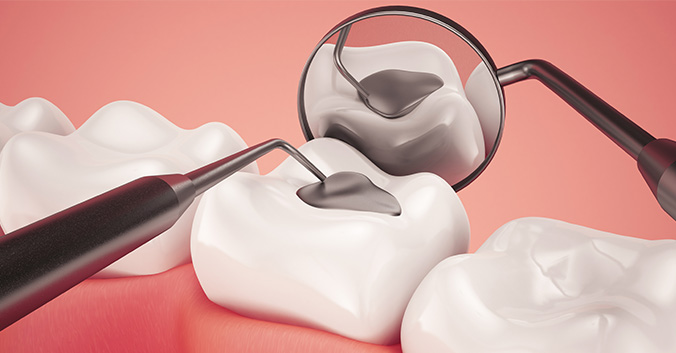
How to dispose of dental amalgam safely
Dental amalgam has safely served patients for more than 150 years. Its durability and affordability make it an acceptable dental material for restoring teeth. However, the presence of mercury in amalgam has raised some health and environmental concerns.
Mercury is a neurotoxin and is difficult to contain, so it has to be handled carefully to avoid exposure to humans and wildlife. What’s the best way to dispose of amalgam so that it doesn’t adversely affect the environment and is safe for dental team members to handle? Dental consultant Dr. Michael Tarighati gives us some best practices to follow.
About amalgam
Amalgam is a compound composed of about 50% liquid mercury and a powdered alloy of silver, tin, and copper mixed in a capsule. The mercury chemically reacts and binds with the alloy to form amalgam, which can be used to restore cavities.
When amalgam is placed on or removed from teeth, small amounts of mercury vapor are released, even when the patient is chewing.
Exposure to high levels of mercury vapor — higher than those in fillings — can cause damage to the kidneys and brain.
Amalgam disposal laws
The U.S. Food and Drug Administration (FDA) categorizes dental amalgam as a Class II medical device and considers it safe for use on adults and children over 6 years old. It makes sure dental professionals handle the material safely and effectively. Each dental office must have the proper written discarding protocols for dental amalgam.
Effective July 14, 2020, dental practices must comply with the rules from the U.S. Environmental Protection Agency, which require dental facilities to install amalgam separators to capture the amalgam waste and remove at least 95% of all amalgam. This minimizes the amount that gets discharged into the wastewater system and the environment. Facilities that are exempt from these rules include those specializing in orthodontics, oral and maxillofacial surgery, periodontics, oral and maxillofacial radiology, prosthodontics and oral pathology. These practices don’t use amalgam in their procedures.
California has additional requirements that prohibit any rinsing or flushing any amalgam-containing trap or container in the sink, drain or toilet. In addition, to avoid placing amalgam waste, including defective amalgam capsules, extracted teeth with residual amalgam, or amalgam-containing traps in the biohazard waste or the regular solid waste containers, such as Isolyzer.
The FDA advises against replacing existing amalgam fillings that are in good condition unless it’s medically necessary. Delta Dental agrees with this advice. Do not remove amalgam fillings that are in good condition with no nearby decay present on the tooth. Removing them may result in loss of tooth structure and unnecessarily release mercury vapor.
Disposing of amalgam
Since mercury is considered toxic, you must follow certain safety protocols. To contain any mercury vapor while placing or removing amalgam from teeth, you need to use a rubber dam to isolate the teeth and use large amounts of water with high-volume suction alongside an air purifier to capture the vapors.
The rubber dam also acts as a barrier that prevents the patient from swallowing any particles, including amalgam.
To properly dispose of amalgam:
- Collect all amalgam that may hide in chairside traps, screens, vacuum pump filters or carrier instruments and place it in a separate airtight container labeled “Scrap dental amalgam.” Also include the office name, address, telephone number, and date it was first collected in the container.
- Don’t throw the container in the trash. Instead, send it to an EPA-licensed company such as Stericycle.
- Inspect, clean and maintain amalgam separators regularly according to the manufacturer’s recommendations and replace them when they are full. They must also comply with the American National Standards Institute (ANSI), American Dental Association (ADA), or the International Organization for Standardization (ISO).
With these protocols in place and committing to its strict consistent practices, you can make sure you treat your patients safely while protecting the environment from toxic and hazardous waste.
Recent posts
- Delta Dental is partnering with dental schools to offer exclusive CE courses
- Drive better patient experiences with benefit conversations
- Offer care beyond the chair with teledentistry
- Healthy mouths begin with hygienists
- How to educate patients and make them partners in oral health
- Dr. Justin Perdichizzi — serving those who served
- Get your patients to make (and keep) their dental appointments
- One sign-on, many advantages
- Delta Dental hosts in-person Provider Advisory Council in Arizona
- Tooth be told, we love our dentists
